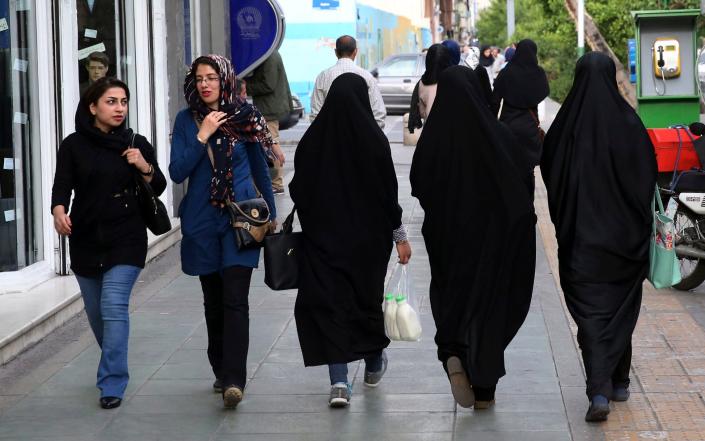
Iran has redeployed its morality police, which forces women to wear the hijab, nearly a year after the death of a woman in police custody sparked protests across the country.
Morality police had largely halted patrols following the death of 22-year-old Mahsa Amini last September as authorities struggled to contain mass protests that posed one of the boldest challenges to Iran’s theocracy since the Islamic revolution of 1979.
Their reintroduction comes as many women have continued to violate the country’s strict dress laws, despite a strong crackdown on protests.
In Tehran on Sunday, morality police could be seen patrolling the streets in marked vans.
Meanwhile, footage circulating on social media showed female police officers, dressed in all-black chadors, berating and arresting women with their heads uncovered.
As part of their attempt to dissuade Iranian women and girls from removing their hijab, Iran’s Islamic leaders have also resorted to a series of new draconian measures in recent weeks.

Local media reported on Friday that a woman who was arrested for defying the law had been jailed for two months and forced to wash the bodies of dead women in the central town of Varamin.
Other women detained by the police were reportedly told that they had to see a psychiatrist every fortnight for at least three months in order to be examined.
They must be declared “free from anti-social behavior” before the sessions can end, the Etemad newspaper reported.
As the morality police retreated, authorities took other steps to enforce the law. These included closing businesses whose staff do not comply with rules and installing cameras in public places to identify and penalize unveiled women.
In what would have been the first conviction based on evidence from CCTV cameras, a woman was sentenced to two months in prison and a two-year travel ban last week.
She was also ordered to undertake mandatory health checks after the judge ruling on her case said her behavior of flouting dress laws was a symptom of a ‘disease’ which ‘must be treated’, reported the non-governmental organization Human Rights Activists in Iran. .
General Saeed Montazer al-Mahdi, spokesman for the police, said on Sunday that the vice police would resume the detention of women seen without the hijab in public.
Heavy crackdown on protesters
Mr Al-Mahdi said President Ebrahim Raisi and religious groups had demanded a return of force after protests largely died down earlier this year due to a heavy crackdown by security forces that left more than 500 dead and nearly 20,000 detained.
Ayatollah Ali Khamenei, Iran’s Supreme Leader, has previously claimed that the number of women who oppose compulsory hijab in Iran is “very few and a handful”.
However, an official survey from 2021 found that more than 70% of Iranian women are against being forced to wear the garment.
The battle over the hijab last year quickly turned into calls for the overthrow of Iran’s clerical rulers, who were accused by many young protesters of being corrupt, repressive and out of touch.
The Iranian government blamed the protests on a foreign conspiracy, without providing evidence.
Ms Amini had been arrested for allegedly breaking the hijab rule, which applies to all women and girls over the age of nine.
Broaden your horizons with award-winning British journalism. Try The Telegraph free for 1 month, then get a year for just $9 with our exclusive US offer.

